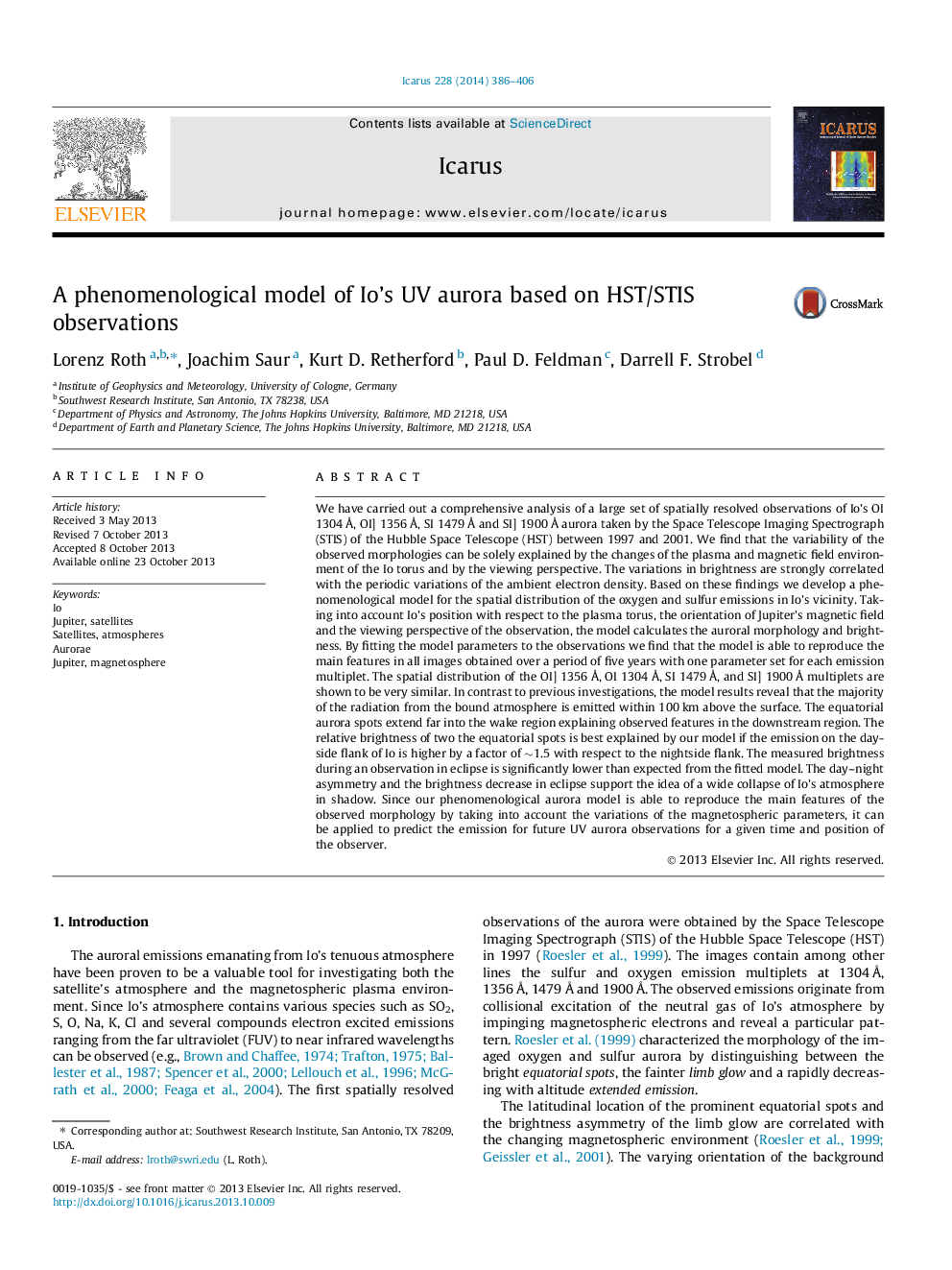| کد مقاله | کد نشریه | سال انتشار | مقاله انگلیسی | نسخه تمام متن |
|---|---|---|---|---|
| 1773302 | 1523562 | 2014 | 21 صفحه PDF | دانلود رایگان |
عنوان انگلیسی مقاله ISI
A phenomenological model of Io's UV aurora based on HST/STIS observations
دانلود مقاله + سفارش ترجمه
دانلود مقاله ISI انگلیسی
رایگان برای ایرانیان
کلمات کلیدی
موضوعات مرتبط
مهندسی و علوم پایه
علوم زمین و سیارات
علوم فضا و نجوم
پیش نمایش صفحه اول مقاله

چکیده انگلیسی
We have carried out a comprehensive analysis of a large set of spatially resolved observations of Io's OI 1304Â Ã
, OI] 1356Â Ã
, SI 1479Â Ã
and SI] 1900Â Ã
aurora taken by the Space Telescope Imaging Spectrograph (STIS) of the Hubble Space Telescope (HST) between 1997 and 2001. We find that the variability of the observed morphologies can be solely explained by the changes of the plasma and magnetic field environment of the Io torus and by the viewing perspective. The variations in brightness are strongly correlated with the periodic variations of the ambient electron density. Based on these findings we develop a phenomenological model for the spatial distribution of the oxygen and sulfur emissions in Io's vicinity. Taking into account Io's position with respect to the plasma torus, the orientation of Jupiter's magnetic field and the viewing perspective of the observation, the model calculates the auroral morphology and brightness. By fitting the model parameters to the observations we find that the model is able to reproduce the main features in all images obtained over a period of five years with one parameter set for each emission multiplet. The spatial distribution of the OI] 1356Â Ã
, OI 1304Â Ã
, SI 1479Â Ã
, and SI] 1900Â Ã
multiplets are shown to be very similar. In contrast to previous investigations, the model results reveal that the majority of the radiation from the bound atmosphere is emitted within 100Â km above the surface. The equatorial aurora spots extend far into the wake region explaining observed features in the downstream region. The relative brightness of two the equatorial spots is best explained by our model if the emission on the day-side flank of Io is higher by a factor of â¼1.5 with respect to the nightside flank. The measured brightness during an observation in eclipse is significantly lower than expected from the fitted model. The day-night asymmetry and the brightness decrease in eclipse support the idea of a wide collapse of Io's atmosphere in shadow. Since our phenomenological aurora model is able to reproduce the main features of the observed morphology by taking into account the variations of the magnetospheric parameters, it can be applied to predict the emission for future UV aurora observations for a given time and position of the observer.
ناشر
Database: Elsevier - ScienceDirect (ساینس دایرکت)
Journal: Icarus - Volume 228, 15 January 2014, Pages 386-406
Journal: Icarus - Volume 228, 15 January 2014, Pages 386-406
نویسندگان
Lorenz Roth, Joachim Saur, Kurt D. Retherford, Paul D. Feldman, Darrell F. Strobel,